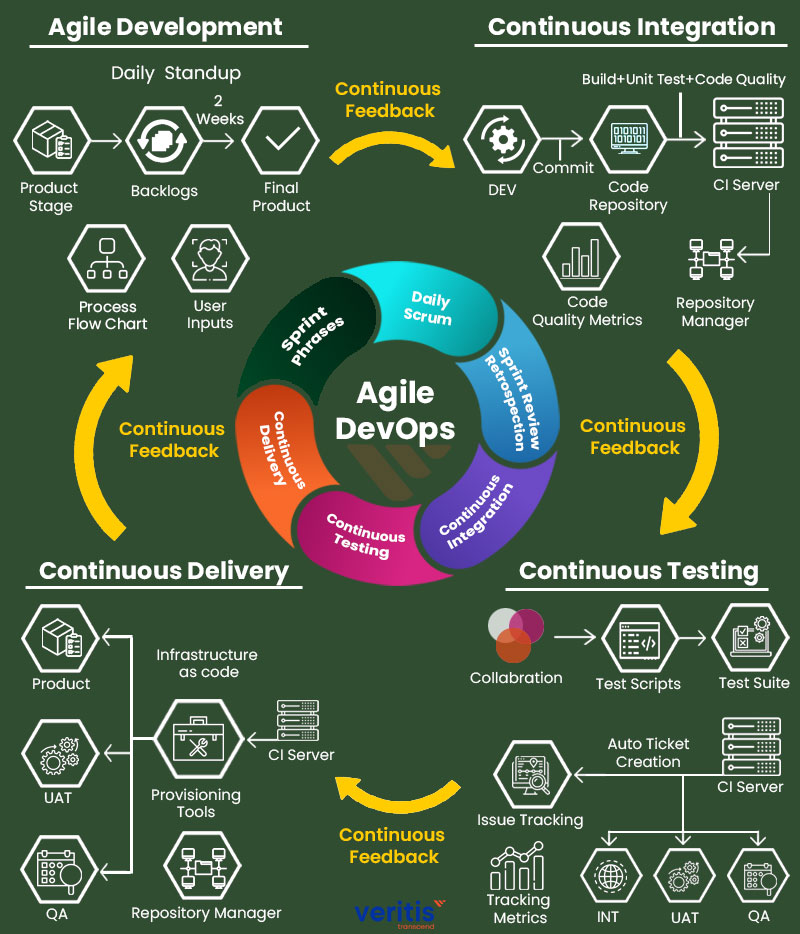Need for Continuous Testing (CT) in DevOps CI/CD Pipeline
Continuous Integration (CI), Continuous Testing (CT), and Continuous Delivery (CD) are considered to be the key metrics to measure successful DevOps practice.
Join the DZone community and get the full member experience.
Join For FreeIn the modern ever-evolving digital landscape, one of the critical challenges for software companies is quickly responding to the changing market and customer demands.
DevOps methodology emerged as the pivotal solution to such a challenge.
DevOps is a new way-of-working that improves value delivery for the customer, enabled by an environment in with multidisciplinary teams work collaboratively to deliver high-quality solutions at a faster pace continuously.
IT organizations are increasingly adopting DevOps practices to enable more frequent software releases to production, enhance time-to-market and improve customer experience. However, successful DevOps implementation generally relies on how organizations apply continuous automation cycles throughout software development, testing, and operations processes.
Continuous Integration (CI), Continuous Testing (CT), and Continuous Delivery (CD) are considered to be the key metrics to measure successful DevOps practice. These processes are often referred to as CI/CD pipeline or DevOps pipeline, which omits testing from the description, despite its crucial role in the software development lifecycle.
Defining CI, CD and CT Processes
Continuous Integration:
CI enables developers to continuously integrate new and updated code into a shared, central code repository several times a day. Each check-in is verified by an automated build, allowing teams to detect issues early in the cycle. Thus, developers can deliver automated, error-free builds that can be quickly deployed.
Continuous Delivery:
CD is the process of streamlining or automating code delivery from continuous integration to production, where it is tested and prepared for release. The code is kept in an always releasable state to deploy it automatically to production at any given time as per business needs.
Continuous Testing:
CT is the practice of automating and integrating tests into the software delivery chain and automatically executing those tests against each build of the codebase. It helps DevOps teams to enable deployment and post-deployment testing in local environments.
Need for Continuous Testing within a CI/CD Pipeline
Although CI and CD are essential for accelerating product releases, CT brings in the quality factor into these frequent releases. The real benefits of adopting CI/CD cannot be realized if there is a lack of automated testing.
CT is considered to be the first step in the right direction when embarking on a DevOps journey. It is a continuous feedback mechanism that drives software delivery through SDLC. If the automated feedback at each checkpoint indicated no bugs or issues, then the process automatically moves to the next step in the delivery chain.
If there are any bugs, the process is stopped immediately, and corrective measures are taken. Ultimately, the releases are more reliable and error-free, resulting in higher productivity, efficiency, and customer satisfaction.
Therefore, by tightly connecting testing with development and operations, IT organizations can collaborate more effectively and deliver on the dual mandate of improving operational agility and accelerating time-to-market.
DevOps teams need to perform automated testing at all levels, including unit, integration, and system.
- Unit Testing: Covers units of code such as methods, classes, and API services.
- Integration Testing: Covers modules and parts of the system.
- System Testing: Tests the entire system to simulate active users.
Teams must ensure that automation testing should cover multiple testing types, including functionality, usability, performance, load, stress, and security.
Working Together: CI/CT/CD DevOps Pipeline
Though CI, CD and CT processes are often treated as distinct entities, they are better together. All three processes are essential for the success of one another throughout the delivery cycle.

However, with different roles and responsibilities, how can DevOps teams bring these processes together? There are three characteristics teams must inculcate to make CI, CD, CT work together.
- The first step is communication — communication between teams is crucial for DevOps success. This is something that CI enables. CI encourages teams to be agile and ensures they are on the same page.
- The second is trust — CD mitigates manual errors and doubt elements by automating and streamlining all the processes leading up to deployment. Thus, teams can trust both the processes and the product, assured that continuous quality is prioritized.
- The third and the final is honesty — If CT is utilized when developing apps, it prevents major issues from happening once the app is live, keeping developers honest about their code's status.
Embrace DevOps Now!
Opinions expressed by DZone contributors are their own.

Comments